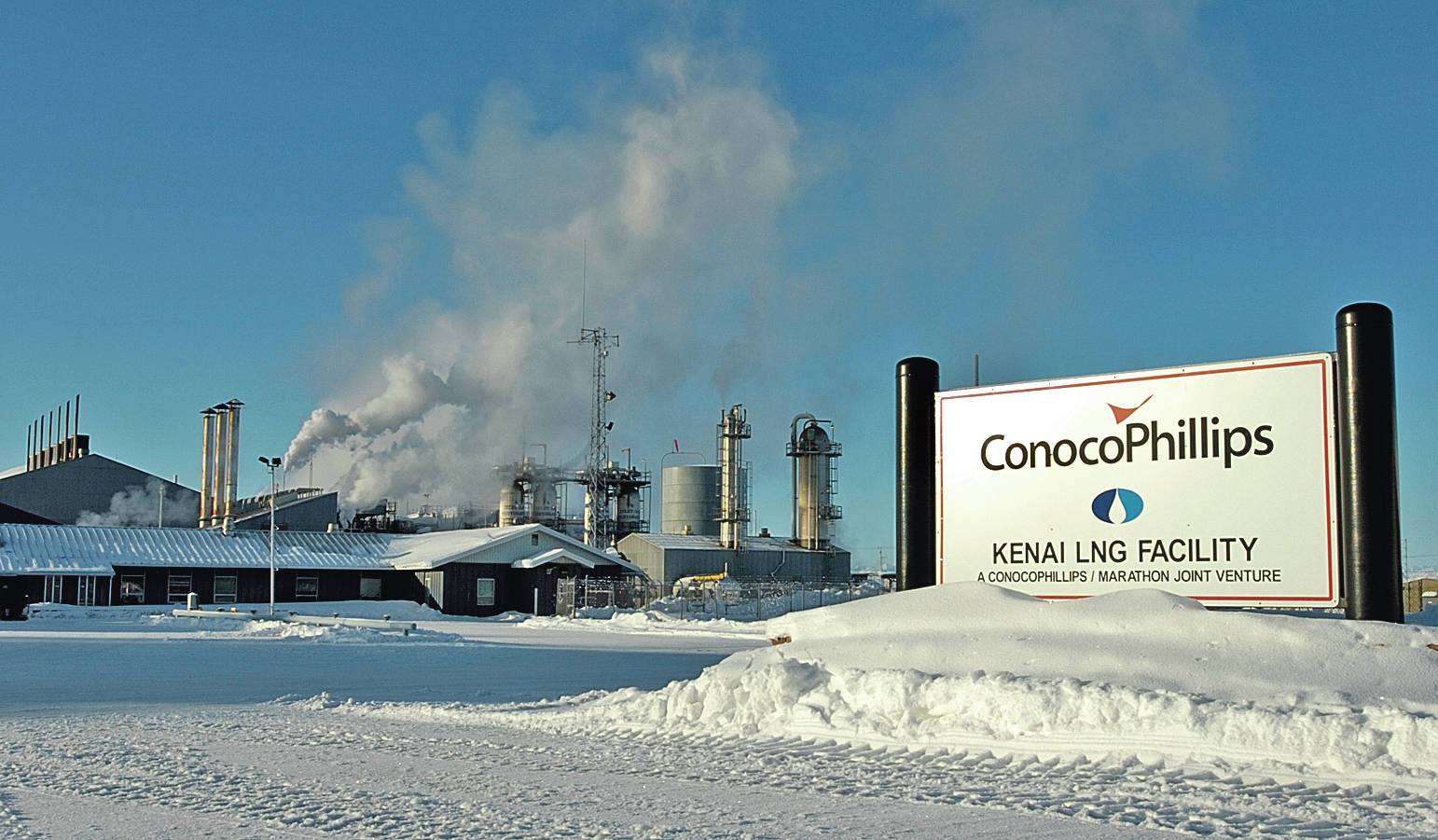JUNEAU — In 2016, ConocoPhillips announced that it was putting its liquefied natural gas plant in Kenai on the market.
But, the company hasn’t yet found a buyer and a company spokesperson said it’s going to save expenses by mothballing the facility this fall.
The facility — under various owners — has been liquefying Cook Inlet gas for sale to overseas markets for nearly 50 years. It is the last piece of infrastructure that ConocoPhillips owns in Cook Inlet.
The Kenai LNG facility is competing with a world market that is awash in natural gas.
“Most people are fairly aware of the fact that worldwide the price of oil and gas has been low,” said ConocoPhillips Senior Communications Specialist Amy Burnett.
ConocoPhillips has been doing relatively well in the oil business in Alaska. The company reported earning $99 million in the first quarter of 2017. And, earlier this year, it announced a new oil discovery in Prudhoe Bay that could yield up to 100,000 barrels of oil a day.
But, it has struggled to make money in the LNG export market.
“Over the last few years, more facilities have come online to export LNG,” Burnett said. “So there are more sources available for the product which makes competition more difficult.”
And the plant has been on hold for awhile.
“Our last export … was in the fall of 2015 and since that time the plant has been in a cold shutdown mode,” she said.
That cold shutdown mode means the plant isn’t exporting any LNG, but could restart shipments relatively quickly.
However, ConocoPhillips wasn’t producing gas nearby like it used to. It sold its natural gas production facilities in Cook Inlet in 2016, so it is buying a lot of the gas it needs to maintain cold tanks.
Letting those tanks warm up means that ConocoPhillips will save some money. But it also means that it will take longer to bring the plant back online — and cost more.
It also means that some people may lose their jobs.
“It’s too soon to say actually what that’s going to look like. There are about 18 ConocoPhillips employees who may be impacted by the change,” Burnett said.
That is just over half of the contractors and ConocoPhillips employees that Burnett said are currently working at the Kenai LNG facility.
Larry Persily, oil and gas adviser for the Kenai Peninsula Borough, said if the company does scale back its operations it will have an impact beyond the potential loss of 18 jobs in the Peninsula communities.
“It’s also a hard reminder to Alaskans that no matter how much we want to sell our oil and gas, if the market doesn’t want it, doesn’t need it or isn’t willing to pay a price to make it profitable — we can’t sell our oil and gas,” Persily said.
Over the last three years, prices have tumbled from $15-$18 per million btu, to just over $5.
“You can’t buy gas out of Cook Inlet, pay to liquify it, burn up some of it while you’re liquefying it, put it in a tanker and deliver it for $5.50 per million btu and make money,” he said. “It is an inhospitable market and will be for the near future.”
Rep. Mike Chenault, R-Nikiski, said he isn’t surprised at the news. He’s been hearing rumors that the plant might shut down.
“They’ve been talking about it and naturally there’s not as many employees there now as there was five years ago,” he said.
But the company’s decision to pull out of the LNG export market could have larger implications for the state. That glut of global LNG is also a roadblock to the state’s efforts to woo investors and build a pipeline to get Prudhoe Bay’s enormous reserves to market.
And the financial future of that project — the Alaska LNG project — has been in question for a while.
The legislature briefly considered cutting $50 million in funding from the Alaska Gasline Development Corporation tasked with developing that project earlier this year. But Chenault said lawmakers ultimately decided to leave the funding in the budget.
In part, he said, because a glut of gas won’t last forever.
“I don’t know if (Alaska LNG would) ever be viable in the current market. But markets change. And sometimes they change drastically as we well know with the price of a barrel of oil or the price of a cubic foot of gas,” Chenault said.
It’s possible that a buyer will take over the facility.
Burnett said the company is still negotiating with potential buyers. But, she didn’t say who those potential buyers were or how those negotiations are going. She said they’re confidential.
In January, the state’s gas corporation revealed that it was negotiating with the company to potentially purchase the site.
Any new buyer would need to get an export license if it wanted to sell gas to foreign markets — the company’s current federal license expires in February of 2018.

